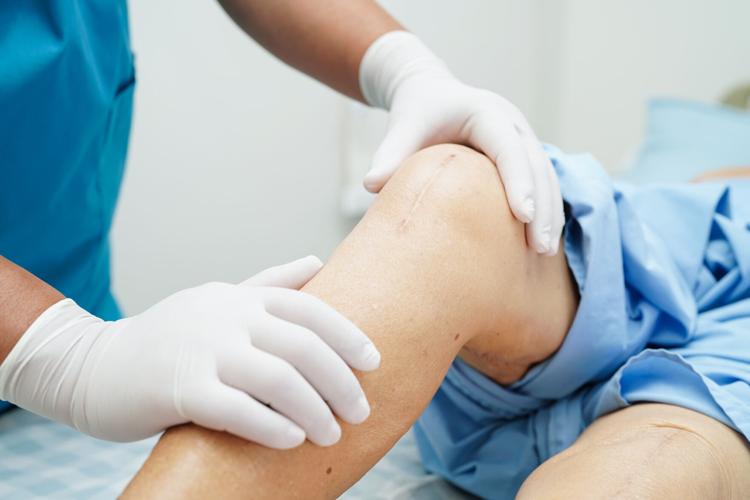
Doctor checking Asian elderly woman patient with scar knee replacement surgery in hospital.
Knee pain can disrupt everything, from your workouts to your workday. When you need knee surgery, your top priority is getting back on your feet. That’s why there’s growing interest in less invasive procedures that promise a quicker recovery. One approach getting more attention is the concept of muscle-sparing knee replacements, sometimes marketed under names like “Jiffy Knee.”
But what does muscle-sparing really mean and is it the right option for you?
Muscle-sparing techniques refer to how a surgeon accesses the joint during knee replacement surgery. Rather than cutting through the quadriceps muscle, the large muscle on the front of the thigh, this approach works around it. By preserving the muscle, patients may experience less post-operative pain, improved strength and potentially faster recovery.

OrthoNebraska surgeon Dr. Sayfe Jassim has been at the forefront of minimally invasive joint replacement techniques, teaching top surgeons from across the country how to perform advanced muscle-sparing procedures.
“There are a lot of factors that go into a successful knee replacement,” said Dr. Jassim. “Using a muscle-sparing approach can help with recovery, but how the knee is replaced matters just as much.”
While there are advantages, muscle-sparing procedures are technically complex and, if performed improperly, can cause complications such as infection, patellar tendon rupture or the implant not working at all. That’s why it’s critical to work with a surgeon experienced in the technique who can determine if it’s suitable for you. Not every patient is a candidate for minimally invasive surgery. In some cases, a more traditional approach offers better visibility and control, leading to a safer and more effective outcome. The team at OrthoNebraska can help determine which route is best for you.
But if a muscle-sparing approach is for you, it’s just one part of the personalized approach OrthoNebraska provides. Surgeons also use robotic-assisted technology, which allows for highly precise implant placement. Using a method called kinematic alignment, they restore the knee’s natural movement and balance more accurately than traditional techniques. The combination of a muscle-sparing approach, robotic-assisted technology and kinematic alignment collectively could contribute to a great outcome. Focusing solely on the approach is missing the mark.
“The robot gives us precision within a fraction of a millimeter,” said Dr. Jassim. “But it’s not just about the tool, it’s about how you use it to get the best results.”
The care doesn’t stop in the operating room. OrthoNebraska’s team includes nurse navigators and physical therapists who guide patients from pre-op through recovery. Every step is coordinated to support long-term success.
Another bonus? No referral is needed. You can book directly without committing to surgery. Many times, nonsurgical options like therapy or injections are recommended first.
“Marketing terms can sound appealing, but they only highlight one part of the process,” said Dr. Jassim. “Great outcomes depend on technique, tools, alignment and the team behind it all. It’s important for a patient to look at a surgeon and facility’s outcomes and not simply search a specific technique.”
For more information, please visit orthonebraska.com.











